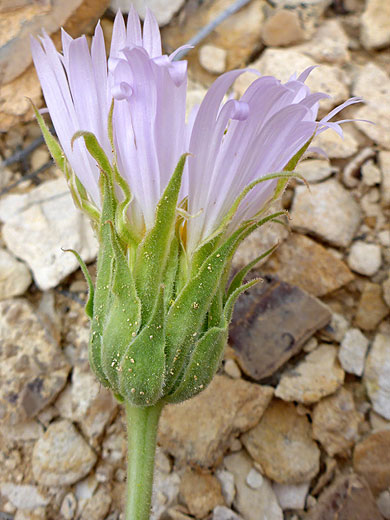Common name:
Big bend woody aster
Family:
Scientific name:
Xylorhiza wrightii
Main flower color:
Range:
West Texas
Height:
Between 7 and 15 inches, occasionally more
Habitat:
limestone flats and hillsides; 2,200 to 3,600 feet
Leaves:
Oblong to spatulate, up to 2 inches long and 1 inch across, usually with toothed edges
Season:
March to
Xylorhiza wrightii has limited distribution in the US, found only in four counties of far west Texas, centered on the Big Bend area. Plants are shrub-like perennials, producing a woody stem that typically branches a few times - near the base and most of the way to the tip - and is densely covered by small, forked, glandular hairs. Leaves grow at alternate intervals; they are broadly ovate in shape, with teeth along the edges and short hairs on the upper surface.
The involucre is around one inch wide and long, ringed by between 24 and 45 green, hairy lance-shaped phyllaries, which taper to a narrow tip, often bent backwards. Flowerheads usually have between 24 and 32 light purple or bluish ray florets, around a center of orange disc florets.
The involucre is around one inch wide and long, ringed by between 24 and 45 green, hairy lance-shaped phyllaries, which taper to a narrow tip, often bent backwards. Flowerheads usually have between 24 and 32 light purple or bluish ray florets, around a center of orange disc florets.
All Contents © Copyright The American Southwest | Comments and Questions | Contribute | Site Map



